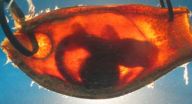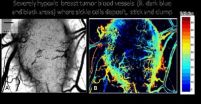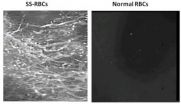(Press-News.org) Welcome to "This Week in Blood," a weekly snapshot of the hottest studies from each week's issue of Blood, the official journal of the American Society of Hematology (ASH), hand-picked by Blood Editor-in-Chief Bob Löwenberg, MD, and Deputy Editor Nancy Berliner, MD.
Systemic delivery of a TLR7 agonist in combination with radiation primes durable anti-tumor immune responses in mouse models of lymphoma, Dovedi et al.
This week's plenary paper offers a promising potential new immunotherapeutic modality for the treatment of lymphoma. The authors present convincing data to suggest that a toll-like receptor 7 (TLR7) agonist sensitizes tumor cells to radiotherapy. In a mouse model, this increases radiation-induced cell death and prolongs responses.
Model-based decision rules reduce the risk of molecular relapse after cessation of tyrosine kinase inhibitor therapy in chronic myeloid leukemia, Horn et al.
The success of tyrosine kinase inhibitors in the treatment of chronic myeloid leukemia (CML) has led to early investigation of the safety of discontinuing therapy for patients with prolonged deep response to treatment. In this manuscript, Horn and colleagues present a way of predicting the safety of therapy discontinuation.
Biologic and clinical significance of somatic mutations of SF3B1 in myeloid and lymphoid neoplasms, Cazzola et al.
This manuscript, featured as this week's Perspective, discusses how our understanding of the pathophysiology of myelodysplastic syndromes (MDS) and other hematologic malignancies has been transformed over the last year with the discovery of the prevalence and prognostic significance of mutations in genes encoding the cellular splicing machinery.
###
Blood (www.bloodjournal.com), the most cited peer-reviewed publication in the field of hematology, is available weekly in print and online. Blood is the official journal of the American Society of Hematology (ASH) (www.hematology.org), the world's largest professional society concerned with the causes and treatment of blood disorders.
ASH's mission is to further the understanding, diagnosis, treatment, and prevention of disorders affecting blood, bone marrow, and the immunologic, hemostatic, and vascular systems by promoting research, clinical care, education, training, and advocacy in hematology.
blood® is a registered trademark of the American Society of Hematology.
This week in Blood: Jan. 10, 2013
2013-01-10
ELSE PRESS RELEASES FROM THIS DATE:
Helping patients navigate new cancer drugs
2013-01-10
EAST LANSING, Mich. — As cancer treatment in pill form transforms how care is delivered, a new Michigan State University study underscores the challenges patients face in administering their own chemotherapy outside the supervised environment of a cancer clinic.
Chemotherapy pills can target specific cancers better than some traditional intravenous drugs, said Sandra Spoelstra, an MSU assistant professor of nursing who led the study. But they also can be difficult for patients to take.
"Prescriptions for some oral pills have complex instructions," Spoelstra said. ...
Measuring genomic response to infection leads to earlier, accurate diagnoses
2013-01-10
DURHAM, N.C. -- Duke researchers are looking to genomic technologies – not the isolation of bacteria or viruses – to quickly detect and diagnose infectious diseases such as the flu and staph.
Two studies appearing online Jan. 9, 2013, both in the journal PLOS ONE, show how a pattern of genomic information among infected individuals can be used to accurately pinpoint the cause of infection.
"Traditional diagnostic tests for infectious diseases rely on detecting the specific illness-causing pathogens. So you only find what you're looking for," said Geoffrey Ginsburg, ...
Stem cells may hold promise for Lou Gehrig's disease
2013-01-10
SAN DIEGO – Apparent stem cell transplant success in mice may hold promise for people with amyotrophic lateral sclerosis (ALS), or Lou Gehrig's disease. The results of the study were released today and will be presented at the American Academy of Neurology's 65th Annual Meeting in San Diego, March 16 to 23, 2013.
"There have been remarkable strides in stem cell transplantation when it comes to other diseases, such as cancer and heart failure," said study author Stefania Corti, MD, PhD, with the University of Milan in Italy and a member of the American Academy of Neurology. ...
Baby sharks stay still to avoid being detected by predators
2013-01-10
VIDEO:
This is a video clip of a bamboo shark embryo responding to an electrical stimulus by ceasing gill movements.
Click here for more information.
Baby sharks still developing in their egg cases can sense when predators are near, and keep very still to avoid being detected, according to research published January 9 in the open access journal PLOS ONE by Ryan Kempster from the University of Western Australia and colleagues.
Adult sharks are known to use highly sensitive ...
Deal or no deal: 5 year olds make smart decisions in games of risk
2013-01-10
You may have to be over a certain age to be a contestant on "Deal or No Deal", but children as young as five start to maximize their profits - in cookies - when making decisions similar to those on the show, according to research published January 9 in the open access journal PLOS ONE by Valerie Dufour and colleagues from the National Center for Scientific Research in France.
Children aged 3-9 were given a cookie and presented the option to either keep it or exchange it for one of 6 identical cups containing cookies. The cookies in the cups could be larger, smaller or ...
Genetic form of anemia offers new avenue to treating drug-resistant tumors
2013-01-10
VIDEO:
This is an intravital microscopy of the skin window of tumors in mice injected with
SSRBCs or NLRBCs.
Click here for more information.
The genetic mutation that causes sickle cell anemia also turns red blood cells into potent tumor killers and may offer a new way to treat some cancers that are resistant to existing treatments, according to research published January 9 in the open access journal PLOS ONE by David S. Terman of Jenomic Research Institute and colleagues ...
Brown eyes appear more trustworthy than blue
2013-01-10
People view brown-eyed faces as more trustworthy than those with blue eyes, except if the blue eyes belong to a broad-faced man, according to research published January 9 in the open access journal PLOS ONE by Karel Kleisner and colleagues from Charles University in the Czech Republic.
The study's results attempt to answer a larger question: What makes us think a person's face looks trustworthy? The authors asked study participants to rate male and female faces for trustworthiness based on two features: eye color and face shape. A significant number of participants found ...
Sickle cells show potential to attack aggressive cancer tumors
2013-01-10
DURHAM, N.C. – By harnessing the very qualities that make sickle cell disease a lethal blood disorder, a research team led by Duke Medicine and Jenomic, a private cancer research company in Carmel, Calif., has developed a way to deploy the misshapen red blood cells to fight cancer tumors.
Reporting in the Jan. 9, 2013, edition of the on-line journal, PLOS ONE, the researchers describe a process of exploiting sickle-shaped red blood cells to selectively target oxygen deprived cancer tumors in mice and block the blood vessels that surround them.
"Sickle cells appear ...
Johns Hopkins scientists use Pap test fluid to detect ovarian, endometrial cancers
2013-01-10
Using cervical fluid obtained during routine Pap tests, scientists at the Johns Hopkins Kimmel Cancer Center have developed a test to detect ovarian and endometrial cancers. In a pilot study, the "PapGene" test, which relies on genomic sequencing of cancer-specific mutations, accurately detected all 24 (100 percent) endometrial cancers and nine of 22 (41 percent) ovarian cancers. Results of the experiments are published in the January 9 issue of the journal, Science Translational Medicine.
The investigators note that larger scale studies are needed before clinical implementation ...
Mapping the Milky Way: Radio telescopes give clues to structure, history
2013-01-10
Astronomers have discovered hundreds of previously-unknown sites of massive star formation in the Milky Way, including the most distant such objects yet found in our home Galaxy. Ongoing studies of these objects promise to give crucial clues about the structure and history of the Milky Way.
The scientists found regions where massive young stars or clusters of such stars are forming. These regions, which astronomers call HII (H-two) regions, serve as markers of the Galaxy's structure, including its spiral arms and central bar.
"We're vastly improving the census of our ...




